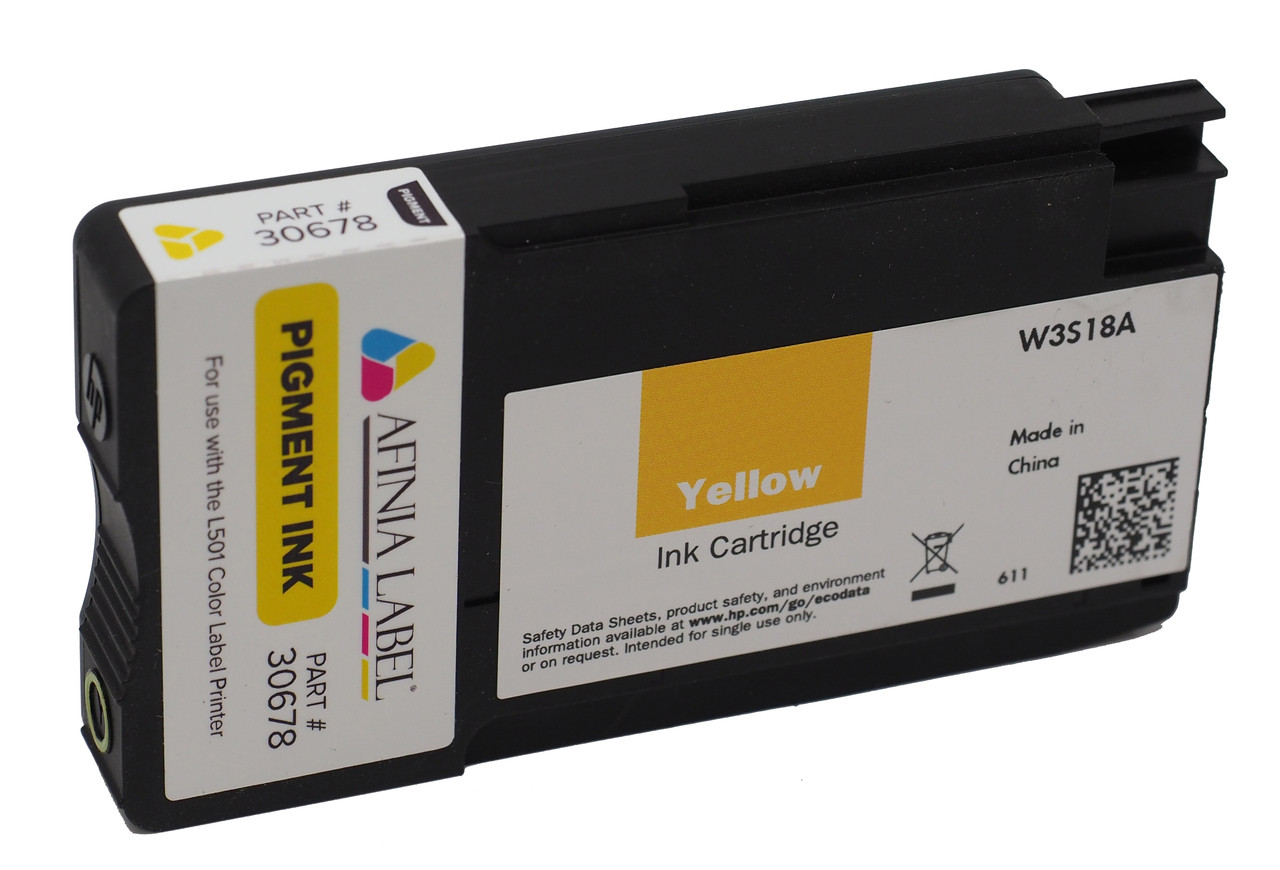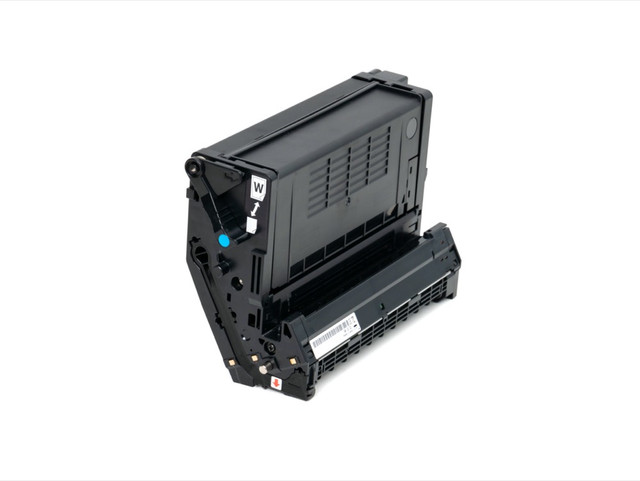Ink Cartridges vs. Toners: Which is Best for Your Label Printing Needs?
12th Jun 2025
In the world of professional label printing, efficiency and quality go hand in hand. Whether you're printing labels for product packaging, shipping, or asset management, the type of printing technology you use can significantly affect your results. Two of the most commonly used consumables—ink cartridges and toners—each have their own advantages and limitations. While ink cartridges are typically associated with vibrant, high-resolution output, toners are known for their speed, durability, and cost-efficiency over long runs.
Choosing between these two depends on your specific business needs, including the type of labels you produce, your budget, and your printing volume. This blog will break down the key differences between ink cartridges and toners, helping you decide which one offers the best value and performance for your labeling operations. We’ll also introduce reliable high-yield options available at DuraFast Label Company to help you get the most out of every print job.
Understanding the Basics: Ink Cartridges vs. Toners
When deciding between ink cartridges and toners, it’s important to understand how each works and what types of printers they are used in.
What Are Ink Cartridges?
Ink cartridges are used in inkjet printers, which spray tiny droplets of liquid ink directly onto the label material. These cartridges can contain dye-based or pigment-based inks. Dye-based inks offer bright, vibrant colors ideal for photo-quality labels, while pigment-based inks are more resistant to water and UV exposure, making them suitable for more durable applications.
If your business requires sharp, colorful label designs, buying ink cartridges for printers like the Afinia L701 can be a practical solution. This Memjet ink cartridge delivers high-speed printing with exceptional clarity—perfect for demanding environments.
What Are Toners?
Toners are used in laser printers and are composed of fine powder that is melted onto the label surface using heat. This process makes toner-based prints highly durable, smudge-proof, and resistant to water and chemicals. If your business prints high volumes of labels or needs long-lasting prints, toner printers may be the better choice.
For example, the Afinia LT5C Black Toner Cartridge is engineered for consistent, sharp monochrome output with high page yields, making it ideal for enterprise-level label printing.
Cost Efficiency and Yield Comparison

Choosing between ink cartridges and toners often comes down to long-term cost efficiency. While initial printer prices may vary, the cost per page is the key factor businesses should consider.
Ink Cartridges: Lower Entry Cost, Higher Long-Term Expense
Inkjet printers generally have a lower upfront cost, making them appealing to smaller businesses or startups. However, ink cartridges often need to be replaced more frequently, especially during high-volume printing. This can lead to higher overall ink costs over time.
To manage expenses, businesses should consider high-yield ink options, like the Afinia L501/L502 Yellow Pigment Ink Cartridge. These cartridges are designed to produce more labels per unit and reduce waste, making them a smart buy for cost-conscious operations.
Toners: Higher Initial Cost, Better Long-Term Value
Laser printers and their toners come with a steeper initial price tag, but they’re often more economical in the long run—especially for businesses with frequent, high-volume printing needs. Toners have a significantly higher yield, producing thousands of labels before needing replacement.
For instance, the Afinia LT5C Black Toner Cartridge offers excellent yield performance, making it ideal for businesses aiming to minimize downtime and consumable costs.
Durability and Label Application Suitability
When it comes to label printing, durability isn't just a nice-to-have — it's essential. The environment in which your labels will be used should directly influence whether you choose ink cartridges or toners.
Inkjet: Great for Vivid Color, Less for Harsh Environments
Ink cartridges, especially dye-based inks, deliver brilliant, high-resolution prints ideal for product labels that prioritize visual appeal. However, they are more prone to smudging, fading, and water damage unless paired with specialty media or coatings.
Pigment-based ink cartridges, such as the Afinia L701 Yellow Memjet Ink Cartridge, improve resistance to moisture and UV light, making them suitable for more demanding applications. Still, they may not match toner durability in truly industrial environments.
Toner: Superior Smudge, Water, and Heat Resistance
Toner-based labels are exceptionally robust, making them ideal for logistics, warehousing, outdoor use, and chemical packaging. Labels printed with toner are less likely to smear, even when exposed to moisture or heat.
If your business requires labels that endure abrasion, exposure to cleaning agents, or fluctuating temperatures, toner printing — like that offered by the Afinia LT5C Black Toner — is the more reliable choice.
Additionally, those sourcing custom thermal transfer labels may prefer toner-based options to ensure long-lasting legibility in rugged applications.
Print Quality and Label Appearance

When comparing ink cartridges and toners, one of the most noticeable differences is in the finish and vibrancy of the printed labels. Both technologies have strengths, but your business's needs will determine the better fit.
Inkjet: Superior Color Depth and Photographic Quality
Ink cartridges are well-known for delivering rich, vibrant colors and gradients — particularly beneficial for product labels that need to capture consumer attention on shelves. Brands that rely heavily on colorful logos, intricate designs, or photographic images will benefit from the clarity and detail inkjet technology provides.
This is especially true with high-quality pigment-based inks like the Afinia L501/L502 Yellow Pigment Ink Cartridge, which provides excellent saturation and a professional finish.
Toner: Crisp, Clean, and Consistent Text and Lines
Toners, by contrast, produce sharp, clean lines, making them ideal for barcodes, small fonts, and text-heavy labels. While not as vibrant as inkjet, toner-based printers like those using the Afinia LT5C toner deliver precise and consistent results — perfect for logistics or compliance labeling where readability is crucial.
Also, if you often use affordable blank inkjet labels and want to maximize their potential for aesthetic appeal, an inkjet printer is your best bet. However, for strict quality control and scan accuracy, toner might edge out in performance.
Cost-Efficiency and Yield Considerations
When assessing whether to use ink cartridges or toners for your label printing, understanding long-term costs and cartridge yield is crucial for making a financially sound decision.
Ink Cartridges: Lower Initial Cost, Potentially Higher Replacement Frequency
Inkjet printers typically have a lower upfront cost, and their cartridges — like the Afinia L701 Yellow Memjet Ink Cartridge — are often more affordable per unit. However, they may need to be replaced more frequently depending on print volume and color usage.
If your operation prints high-resolution color labels daily, these costs can add up. You’ll want to consider high-yield ink options or buy ink cartridges for printers in bulk to control expenses over time.
Toners: Higher Initial Cost, Greater Page Yield
Toner cartridges generally offer a higher page yield than ink cartridges, making them a more economical choice for large print jobs. For instance, the Afinia LT5C Black Toner delivers more prints per cartridge and requires less frequent replacement, minimizing downtime.
This higher efficiency makes toner-based systems a preferred choice for businesses printing standard designs or high volumes of barcode labels — especially when using custom thermal transfer labels or blank inkjet labels for sale that require consistent performance.
Durability and Label Lifespan
Choosing between ink cartridges and toners doesn’t just impact cost—it directly affects the quality and longevity of your labels, especially in demanding environments.
Inkjet Printing: Excellent for Vivid Colors, Limited Resistance
Inkjet printers using dye-based or pigment-based inks like the Afinia L501/L502 Pigment Ink Cartridge Yellow are ideal for producing rich, detailed graphics on labels. However, unless you use pigment-based ink and coated materials, the prints can be prone to smudging or fading when exposed to water, heat, or chemicals.
If your business relies on eye-catching product labels for indoor retail, inkjet can be the perfect match—especially when paired with affordable blank inkjet labels designed for high-contrast, full-color imaging.
Toner-Based Printing: Built for Industrial-Grade Labels
Toner, being a dry powder fused onto the label via heat, offers greater resistance to moisture, temperature fluctuations, and abrasion. For this reason, toner-based printers like the Afinia LT5C are better suited for printing thermal transfer labels for sale or other industrial-grade solutions that must remain readable over long periods and in harsh conditions.
This makes toner the go-to option for logistics, pharmaceuticals, or manufacturing, where label durability isn’t negotiable.
Print Speed and Volume Requirements

Your label printing needs—whether small batches or large-scale production—play a critical role in determining whether ink cartridges or toner is the smarter investment.
Inkjet Printing: Better for Small to Medium Runs
Inkjet printers generally print slower than laser or toner-based systems. However, they’re ideal for short to medium runs where customization and image quality matter more than speed. If your business frequently updates product labels or offers limited-edition runs, using ink cartridges—like the Afinia L701 Yellow Memjet Ink Cartridge—can provide flexibility without wasting resources.
For companies sourcing custom designs or creating branded packaging, blank inkjet labels for sale offer a canvas that aligns perfectly with this printing style.
Toner Printing: Optimized for High-Volume Operations
Toner-based systems, on the other hand, are engineered for speed and consistency in high-volume environments. These machines are ideal for large production lines, offering fast throughput without sacrificing quality. Businesses that operate on tight deadlines or require fast label turnaround will find toner a much better fit.
If you’re managing a warehouse, distribution center, or manufacturing floor, the ability to print hundreds—or thousands—of custom thermal transfer labels in a single shift with no smudging or drying delay is a serious advantage.
Final Verdict: Matching Print Technology with Business Priorities
Choosing between ink cartridges and toner ultimately comes down to your specific business needs—whether it’s vivid imagery for short runs or rapid output for large-scale labeling. Inkjet printers powered by cartridges like the Afinia L501 Yellow Pigment Ink Cartridge are great for vibrant, detailed label designs. Meanwhile, toner solutions like the Afinia LT5C Black Toner offer speed, volume efficiency, and lower long-term costs.
When sourcing supplies, look for options that match your print type. For inkjet systems, it’s easy to buy blank inkjet labels online that pair perfectly with your cartridge ink. Businesses managing ongoing print operations should also explore affordable blank inkjet labels to reduce supply costs without compromising on quality.
Whether you’re investing in toner for durability or ink for design flexibility, DuraFast Label Company provides everything from ink cartridges for printers to label stock and expert guidance—ensuring you get the right tools to streamline your workflow and reduce waste.
